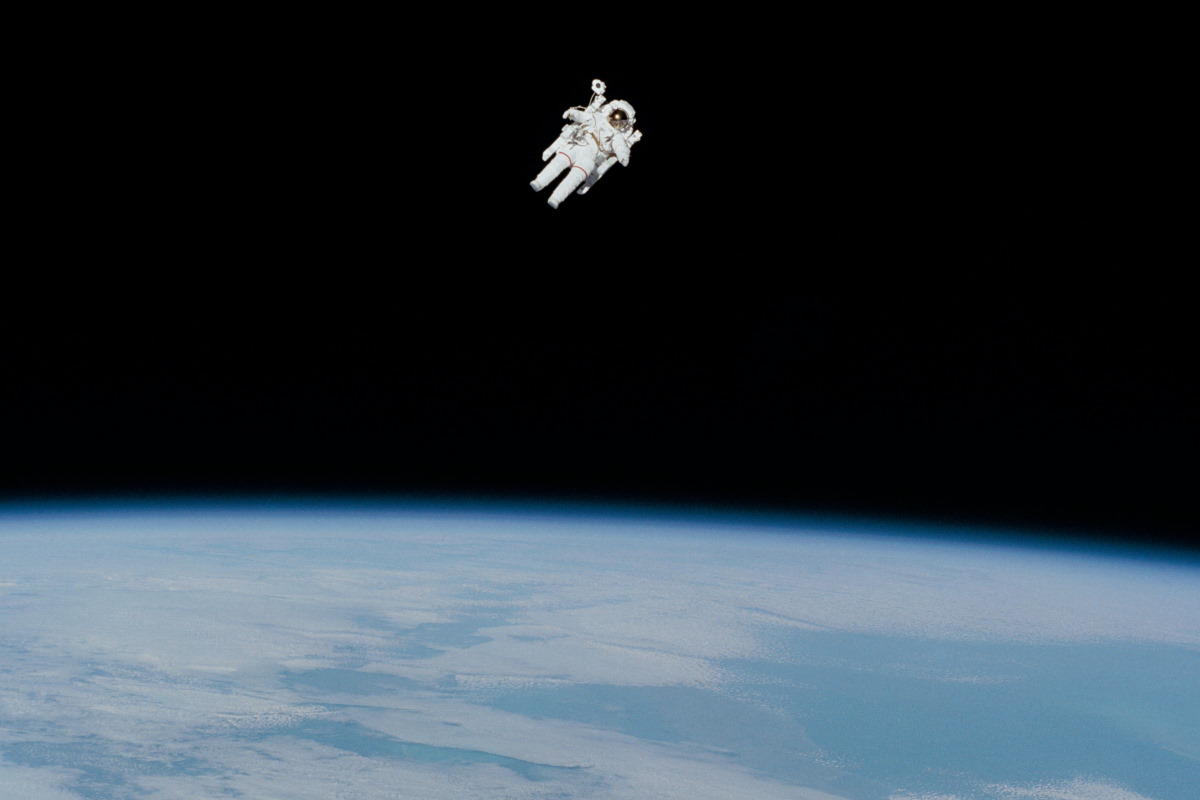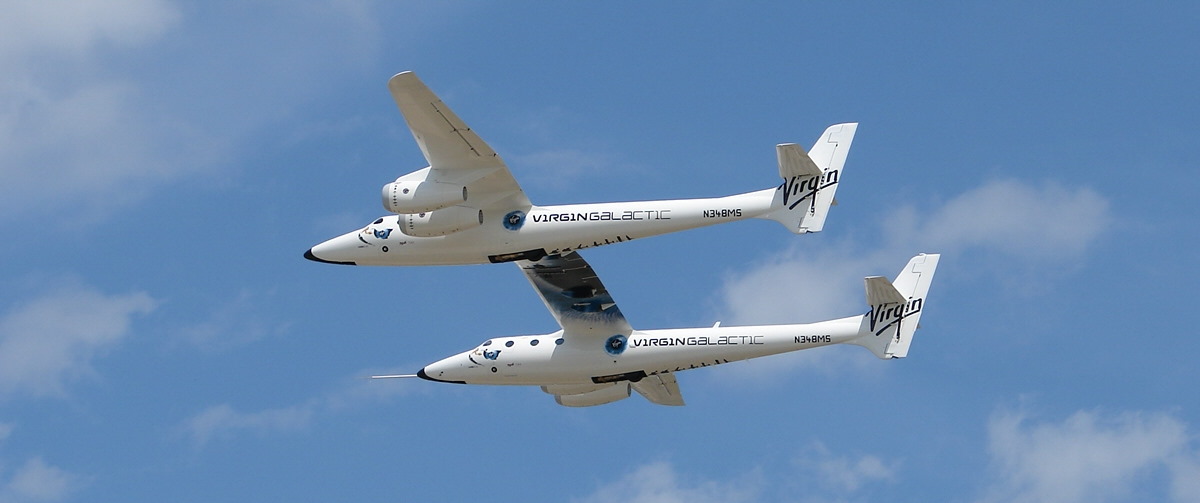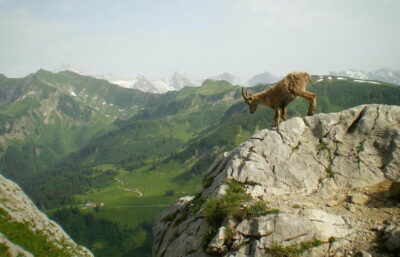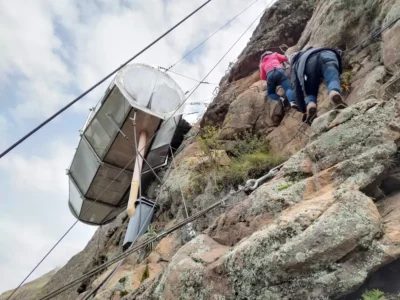Anyone who has a fear of heights will know that it can be triggered by many different situations. It can be as mundane as climbing a flight of stairs or as extreme as walking across a rickety rope bridge above a thousand-foot drop. But how about possibly the most out-there experience of all: going to outer space?
Even though the prospect of space travel is distant for most of us, it remains a fascinating subject. It’s natural, therefore, to wonder if we would experience things the same way we do on earth—and our fears are no exception. We’ll explore whether it’s possible to feel acrophobia in space, and take a look at some scenarios where this phobia could come into play.
Do heights exist in outer space?
The first question we need to answer sounds obvious on the surface of it: if acrophobia is a fear of heights, then what exactly is a height? Us earthbound humans have an easy enough response—a height is a place that’s a significant distance above ground or sea level. If you’re up in space, however, things get a bit trickier.
As we’ve just mentioned, the normal meaning of the word ‘height’ defines things in relation to the ground or the sea. In other words, we’re talking about things that exist on this planet. When we leave this planet, though, things get murkier, as there’s nothing to define things against.

So, where do this planet’s rules cease to apply? Well, outer space is generally held to be the point at which “orbital dynamic forces become more important than aerodynamic forces”. Theodore von Kármán estimated this to be around 80 kilometres above sea level. However, the commonly used Kármán line, despite taking its name from the same physicist, is actually set at 100 kilometres above sea level. NASA Mission Control goes further, setting the boundary at 122 km, taking into account the effect of atmospheric drag.
You might, therefore, think that, beyond a certain point, there are no ‘heights’ to speak of in space—and, in turn, that it’s not possible to feel acrophobia there. However, things are a little trickier than that.
First off, there’s the fact that most people who have gone to space have stayed in low Earth orbit. That means that they’re less than 2,000 km above sea level. This is obviously a vast distance, but you’re still close enough to the planet that it may feel like falling is possible.
The second factor is that phobias are, by their nature, irrational fears. As such, we can feel the impact of acrophobia even when the thing we fear—in most cases, falling—simply isn’t going to happen. The question, then, isn’t one of physics, but of human perception. This means that there’s certainly a possibility of experiencing a fear of heights in space.
Acrophobia in space
While we’ve discussed whether humans could potentially experience acrophobia in space, the only way to know for sure is to turn to the people who’ve actually been there for real.
Of course, so far, only a tiny fraction of the people born here on Earth have ever left it. At the time of writing, the total number stands at just over 600. Luckily, given the highly public nature of space travel, we do know a decent amount about whether astronauts experience acrophobia in space.
Can you become an astronaut if you’re afraid of heights?
First off, we’ll address a question you’re likely to have: wouldn’t someone with a fear of heights hate the idea of becoming an astronaut? And, even if they did apply, wouldn’t this be a disqualifying factor? As it turns out, the answer to those questions is a resounding no.
In a video released by NASA, astronaut Drew Feustel admitted to having a “mild fear of heights”, though he noted that it “apparently doesn’t affect [him] 250 miles above the planet in a spacesuit”. Meanwhile, Canadian astronaut Chris Hadfield spoke to the CBC about his own fear of heights, which he described as a “good fear to have”. He also talked about his experience of overcoming this instinctive reaction while in space, which you can see in greater detail in the video below.
Do astronauts feel a fear of heights when in space?
Now that we’ve discussed whether someone with a fear of heights can go into space, the next topic to explore is what happens when they’re up there. While Drew Feustel claimed that his fear no longer affected him when he went into orbit, Chris Hadfield did have to tackle it—and it turns out that he’s not the only one.
In 2018, Puerto Rican astronaut Joseph Acaba talked about his own experience of going on a spacewalk outside the International Space Station, and the impact that his own fear of heights had on him at the time. Acaba pointed out that he initially had to hold onto the railing before getting the confidence to let go. He also noted that “[it] does take a little bit of work while you’re doing a spacewalk to realise […] you are not going to fall.”
Meanwhile, a NASA report into astronaut health and performance broke down some of the mental and physical rigours that space travellers go through. In it, they note that:
“Some astronauts also experienced transient acrophobia—an overwhelming fear of falling toward Earth—which can be terrifying.”
In addition to this fear, the report also states that height vertigo is common amongst astronauts. This is a common symptom of acrophobia, and is similar to the kind of feeling you may have when looking down from the top of a tall building, or over the edge of a cliff. It’s so widespread, in fact, that many people conflate a fear of heights with vertigo.
This experience was confirmed in the memoirs of astronaut Jerry Linenger, who wrote of his “dreadful and persistent” feeling of “plummeting earthward”. In some respects, this really was the case—with the caveat that he was falling around the Earth rather than towards it.
The future of space travel

For many years, a voyage to the cosmos was something you could only embark upon after years of demanding training. Nowadays, however, we’re at the dawn of an era of commercial space travel, opening up possibilities for a much wider range of people. Of course, at the moment, this option is only accessible to the super-rich. Nevertheless, there could well come a time when the rest of us are able to journey to the stars. So, what could this feel like—and should someone with a fear of heights steer clear?
Well, in all likelihood, any kind of space travel open to the masses will not be as physically and mentally demanding as the trips undertaken by astronauts. One of the currently available options is Virgin Galactic, which begins by taking off in much the same way as an aeroplane would. Only when you’re mid-air will the rocket that takes you to space fire into action. When you reach the right altitude, you can then take off your seatbelts and experience weightlessness, as well as looking down on Earth from your window.
So, would someone with acrophobia enjoy this experience? The answer is likely to be personal. There are many people who feel a fear of heights in certain situations, yet have no problem getting on a plane. If that applies to you, then this kind of trip to space might not faze you. If, however, you have a phobia of flying, then this might not be an item worth adding to your bucket list.
Conclusions
It’s easy to imagine that astronauts are in some way superhuman. The reality, of course, is that they have the same range of fears as the rest of us—and that includes a fear of heights. We’ve touched on several examples of people who’ve shared their experience of acrophobia in space, and, together with findings from NASA, it’s clear that this is far from rare.
As we look to the future, it seems likely that space travel will become open to more of us than ever before. There may even come a time when you tell yourself: if so many people have been up there with a fear of heights, then why shouldn’t I?



